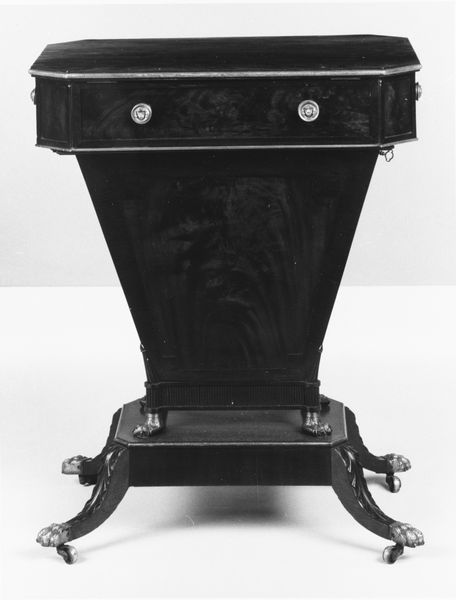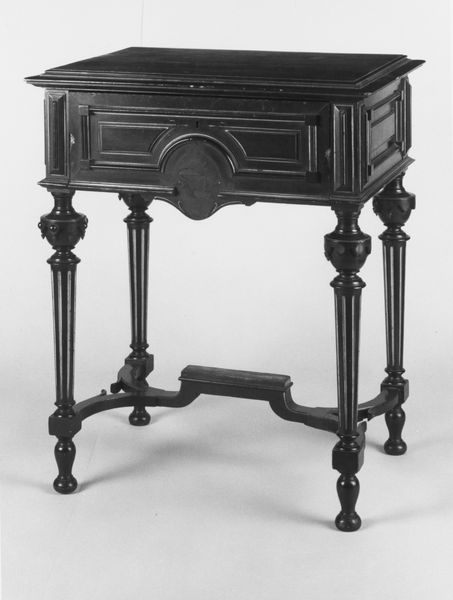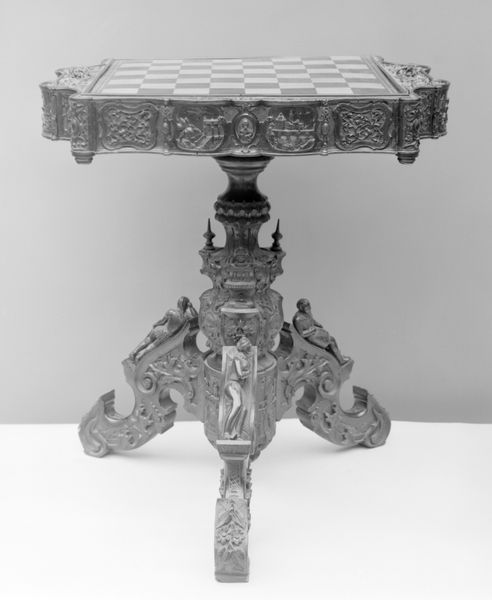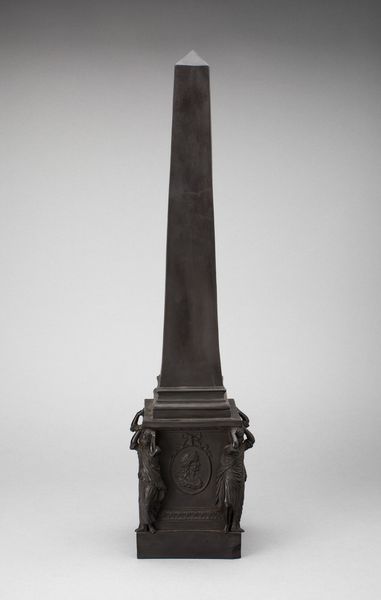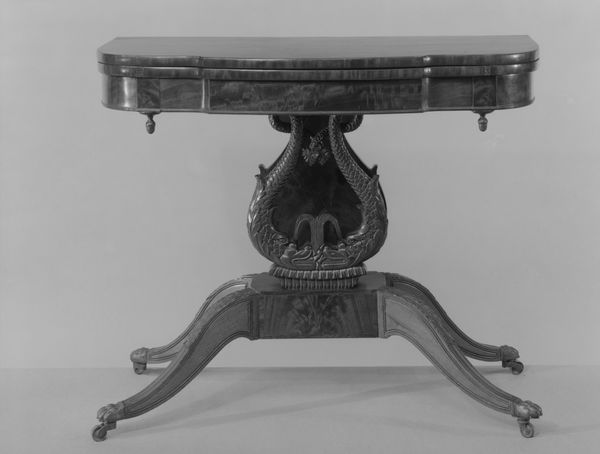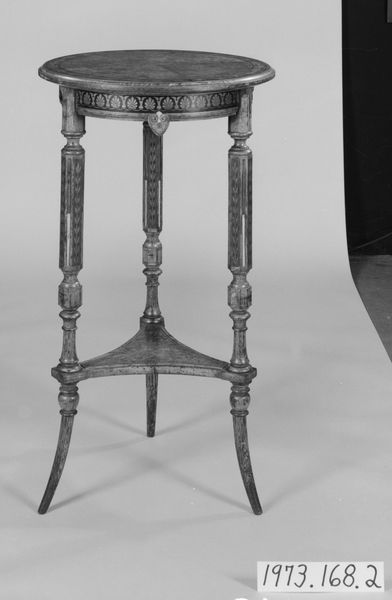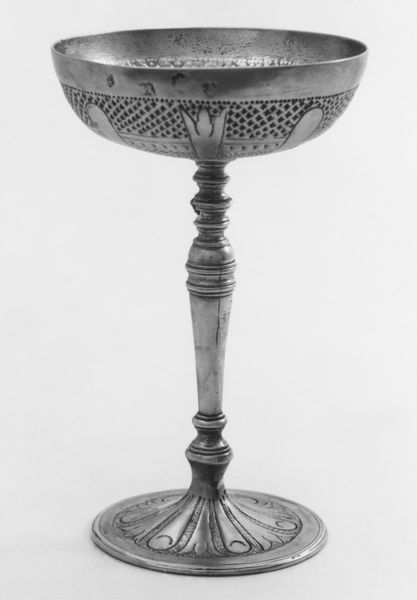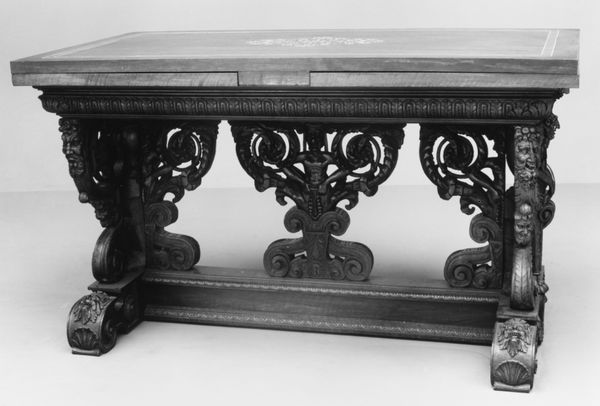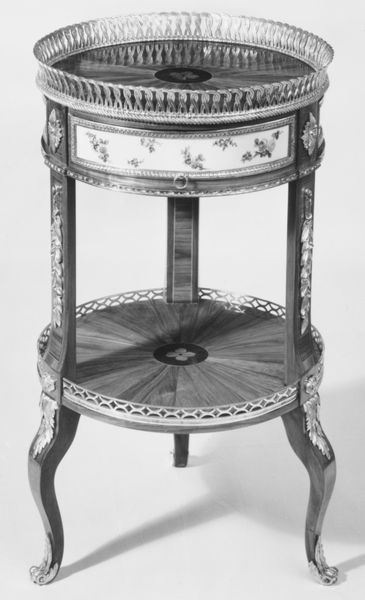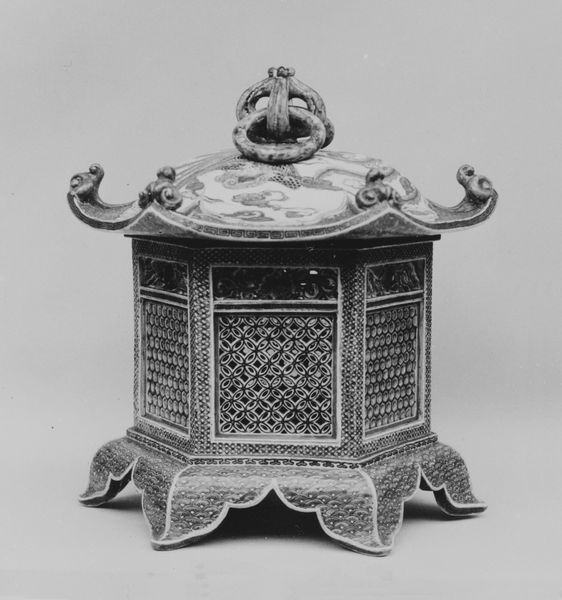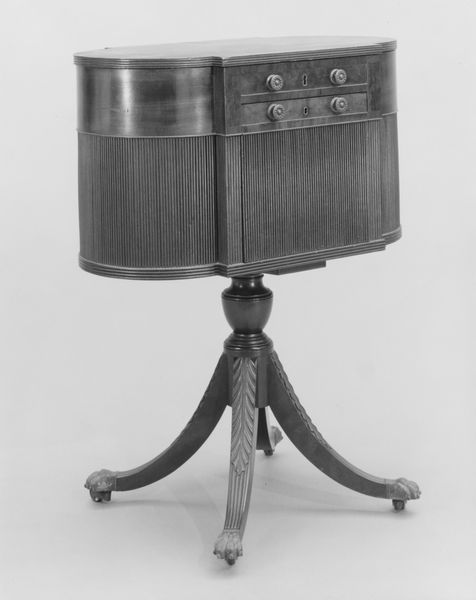
wood
#
sculpture
#
furniture
#
geometric
#
wood
#
decorative-art
Dimensions: H. 28 1/2 in. (72.4 cm); Diam. 27 1/2 in. (69.9 cm)
Copyright: Public Domain
Editor: Here we have the "Sewing Table," created sometime between 1865 and 1875, currently housed at the Metropolitan Museum of Art. It's made of wood and is such an ornate example of decorative art. The inlaid designs give it a unique personality. What stands out to you? Curator: The geometric patterns, mixed with those swirling organic motifs... they speak volumes, don't they? To me, the 'snowflake' on the central support is fascinating. Snowflakes, unique and ephemeral, symbolize fragility and the fleeting nature of life, appearing alongside repeating botanical elements referencing growth and cyclical renewal. Doesn’t it make you think about Victorian attitudes toward nature? Editor: That’s a wonderful observation. I was focusing on how purely decorative the inlays seemed. Now I’m wondering about their deeper meaning. Are the repeating botanical patterns specifically chosen? Curator: Perhaps. Think of the Victorian language of flowers—each blossom carried specific meanings. Even seemingly abstract designs often echoed recognizable plant forms. We must consider how those meanings permeated daily life; such symbols were incredibly potent, functioning almost like a shared, visual subconscious. What feeling do the curving legs evoke for you? Editor: They feel almost animalistic, like stylized paws, but graceful. They feel very dynamic, poised between support and movement. Curator: Exactly. The legs bring motion, an underlying energy, even a certain tension. Imagine a woman seated beside it, perhaps using it to create, to sew... that juxtaposition of action with what appear to be representations of nature’s fragility or the power of nature might tell us a story about how makers, consumers and viewers at the time felt about the human role in larger cycles. It's a delicate balance. Editor: I hadn't considered the table in its intended environment. It certainly transforms my understanding of it. I guess looking beyond surface appearances really does change everything. Curator: Indeed. Each element is part of a carefully considered symbolic tapestry woven into the object itself, reflecting both conscious artistic choices and deeply ingrained cultural narratives.
Comments
No comments
Be the first to comment and join the conversation on the ultimate creative platform.
